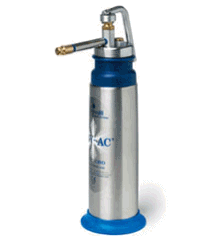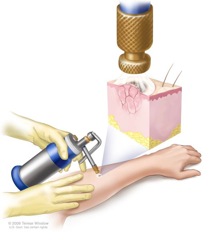
The pain of the procedure usually lasts less than 30 minutes, although some discomfort may persist depending on the duration of the treatment and the area being treated.
After treatment redness of the area occurs together with some swelling, you may also experience some itchiness. The degree of swelling also depends on the site of treatment and the duration. These changes usually last for a few days.
In some people a blister may form and fluid discharge from it, particularly where the skin is rather thin and sensitive or where treatment has been more prolonged, for example in the treatment of skin malignancy. This will form a crust or scab, which will fall off within 12 to 14 days. After this some loss of pigment may be noted in the treated area. It is better not to remove the blister roof, which forms a natural dressing, but you can let the fluid out by pricking the blister with a clean needle.

You may wash and bathe normally.
Plasters or dressings should be avoided unless fluid from the area treated is marking clothing of the area is aggravated by friction from clothing, for example a shirt collar against the neck, a simple dressing can then be applied.
If the area is particularly painful an analgesic may be taken, for instance paracetamol.





